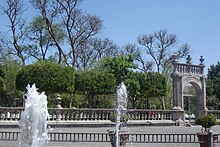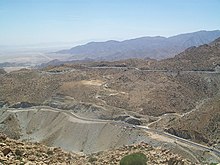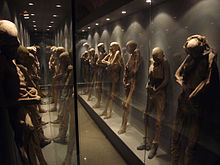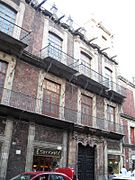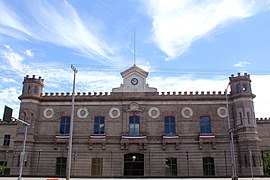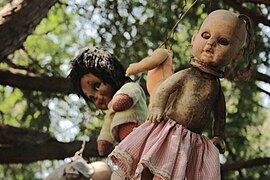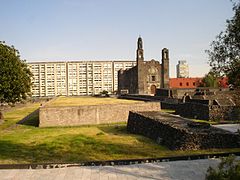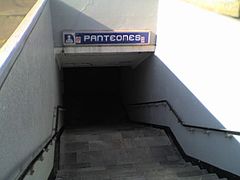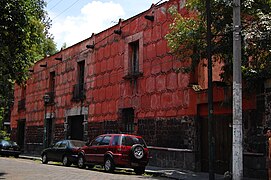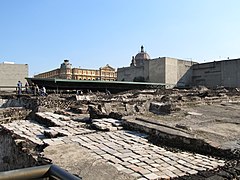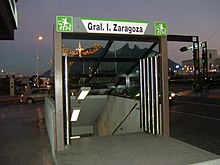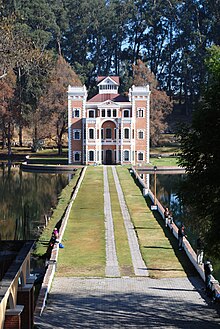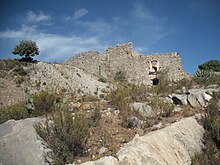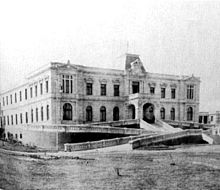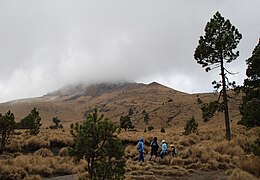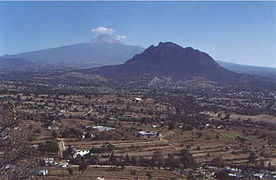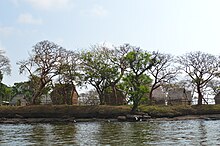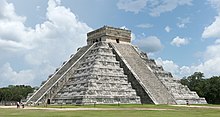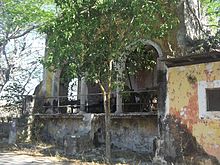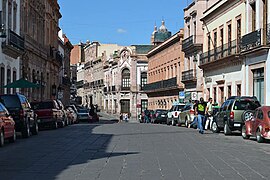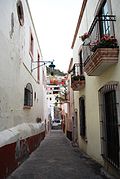
Zacatecas is the principal city within the municipality in Mexico of the same name, and the capital and the largest city of the state of Zacatecas. Located in north-central Mexico, the city had its start as a Spanish mining camp in the mid-16th century. Native Americans had already known about the area's rich deposits of silver and other minerals. Due to the wealth that the mines provided, Zacatecas quickly became one of the most important mining cities in New Spain. The area saw battles during the turbulent 19th century, but the next major event was the Battle of Zacatecas during the Mexican Revolution when Francisco Villa captured the town, an event still celebrated every anniversary. Today, the colonial part of the city is a World Heritage Site, due to the Baroque and other structures built during its mining days. Mining still remains an important industry. The name Zacatecas is derived from the Zacateco people and has its roots in Nahuatl. The name means "people of the grasslands".

Guanajuato is a municipality in central Mexico and the capital of the state of the same name. It is part of the macroregion of the Bajío. It is located in a narrow valley, which makes its streets narrow and winding. Most are alleys that cars cannot pass through, and some are long sets of stairs up the mountainsides. Many of the city's thoroughfares are partially or fully underground. The historic center has numerous small plazas and colonial-era mansions, churches, and civil constructions built using pink or green sandstone. The city historic center and the adjacent mines were proclaimed a World Heritage Site by UNESCO in 1988.

Bruno Bichir Nájera is a Mexican actor.

Jorge Ibargüengoitia Antillón was a Mexican novelist and playwright who achieved great popular and critical success with his satires, three of which have appeared in English: The Dead Girls, Two Crimes, and The Lightning of August. His plays include Susana y los Jóvenes and Ante varias esfinges, both dating from the 1950s. His work also includes short stories and chronicles and is currently considered one of the most influential writers in Latin American literature.
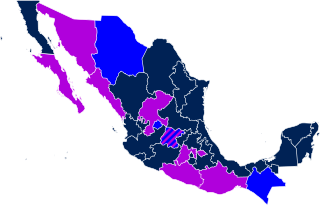
Same-sex marriage is legally recognized and performed throughout Mexico since 31 December 2022. On 10 August 2010 the Supreme Court of Justice of the Nation ruled that same-sex marriages performed anywhere within Mexico must be recognized by the 31 states without exception, and fundamental spousal rights except for adoption have also applied to same-sex couples across the country. Mexico was the fifth country in North America and the 33rd worldwide to allow same-sex couples to marry nationwide.

Xavier López Rodríguez, known professionally as Chabelo, was a Mexican actor, comedian, television presenter and children's music singer. In addition to his television career, Chabelo appeared in more than thirty motion pictures and recorded more than thirty musical albums. He produced shows including La Cuchufleta, La Güereja Quiere Más and En Familia con Chabelo, the latter of which was broadcast every Sunday morning on Televisa's Canal de las Estrellas. It aired for 47 years and consisted of contests with people from the audience, gifts and games and was mainly for children. The program ended on 20 December 2015. At the time of his death, he was one of the last surviving stars from the Golden Age of Mexican cinema.

Jorge Luis Casas Ruiz, better known by his ring name El Felino, is a Mexican luchador working for Mexican wrestling promotion Consejo Mundial de Lucha Libre (CMLL). Casas started his professional wrestling career under the name Babe Casas, working for the Universal Wrestling Association (UWA). In 1989, he adopted the "Felino" ring character, wearing an orange full body suit and cat inspired mask. With the exception of a short stint in AAA in 1999, Casas has worked for CMLL since adopting the "El Felino" ring character. El Felino was originally an enmascarado, or masked professional wrestler, but was forced to unmask in March 2010 due to losing a match.

There are extensive and varied beliefs in ghosts in Mexican culture. In Mexico, the beliefs of the Maya, Nahua, Purépecha; and other indigenous groups in a supernatural world has survived and evolved, combined with the Catholic beliefs of the Spanish. The Day of the Dead incorporates pre-Columbian beliefs with Christian elements. Mexican literature and cinema include many stories of ghosts interacting with the living.

José Ángel Espinoza Aragón, also known as Ferrusquilla, was a Mexican singer-songwriter and film actor. He was the father of actress Angélica Aragón. There is a statue of him along Olas Altas Promenade in Mazatlán, Mexico. He also was a composer affiliated to the SACM.
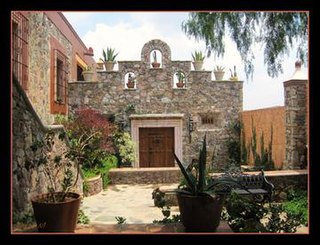
The House of Laments is a historic place in Guanajuato, Guanajuato, Mexico. The mansion dates to the 18th century. During the 1890s and 1900s, the Tadeo Fulgencío Mejía serial murders occurred here. He was a Mexican serial killer motivated by the idea of contacting his deceased wife. Now the house functions as museum, and the local legend says several paranormal phenomena happen in the mansion.

Manuel Dondé was a Mexican film actor. He frequently played villains during his long film career.
Legend Quest is an animated horror-comedy film franchise created by Ricardo Arnaiz and produced by Mexican animation studio Ánima Estudios. It is loosely based on The Reluctant Dragon by Kenneth Grahame. It consists of seven films, a digital television series, and a mobile game. It centers on Leo San Juan, a heroic preteen boy who can communicate with ghosts and monsters; Theodora, a sassy and quirky preteen ghost girl with a know-it-all personality; Sir Andrés, an amicable but loony old knight; Alebrije, a mild-mannered mythological creature; and Finney and Morybetta, two silent calavera children. Set in the early nineteenth century, each of the films is based upon a different Mexican legend.
Canal 13 is a regional broadcasting network operating in parts of Mexico, a division of Albavisión. Its largest subsidiary, Telsusa Televisión México, S.A. de C.V., holds the concessions for 12 TV stations, primarily in southeastern Mexico, obtained in the IFT-6 television station auction of 2017. The Canal 13 network also includes full-fledged TV stations in Villahermosa, San Cristóbal de las Casas—Tuxtla Gutiérrez and Tapachula, as well as their repeaters, and an additional station in Michoacán. All Canal 13 stations are assigned virtual channel 13.

Leyendas Mexicanas (2019) was a professional wrestling super card show that was held on December 6, 2019. The show was produced and scripted by the Mexican professional wrestling promotion Consejo Mundial de Lucha Libre and took place at Arena México in Mexico City, Mexico.
This article lists events occurring in Mexico during the year 2021. The article lists the most important political leaders during the year at both federal and state levels and will include a brief year-end summary of major social and economic issues. Cultural events, including major sporting events, are also listed. For a more expansive list of political events, see 2021 in Mexican politics and government.

The Casa de las Campanas is one of the three oldest buildings in the city of Pontevedra in Spain, and perhaps the oldest civil building. It is located in Don Filiberto street, at number 11, in the old town.
This article lists events occurring in Mexico during 2023. It lists the most important political leaders during the year at both federal and state levels and will include a brief year-end summary of major social and economic issues. Cultural events, including major sporting events, are also listed.

The Casa Matusita is a building located at the intersection of Garcilaso de la Vega and España avenues in the center of Lima, Peru. It is known for the popular belief of being a place where paranormal activity exists.
